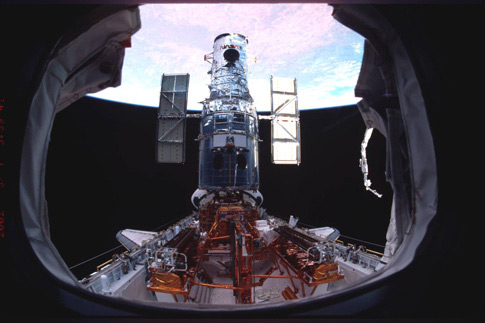Key Takeaways:
September 11, 2008, will mark two significant events in our nation’s history: the seventh anniversary of the infamous terrorist attacks, and the final servicing mission, STS-125, to NASA’s Hubble Space Telescope.
The Flight Assignment Working Group at Johnson Space Center in Houston has, for the first time, added STS-125, or SM4, to its planning manifest. Shuttle Atlantis has been confirmed as the mission’s vehicle. NASA will also position shuttle Discovery on Kennedy Space Center’s launch pad 39B, as the Launch On Need vehicle in case a rescue mission is necessary. Hubble Space Telescope Deputy Program Manager Edward Ruitberg confirmed these details Wednesday, January 10.
Originally slated for 2004, this fifth servicing mission was cancelled following the 2003 Columbia disaster. SM4 was announced October 31, 2006, after NASA reassessed the risks of a shuttle flight to the ailing space telescope.
“Hubble has continued to be a very productive observatory,” Ruitberg says, adding that servicing-mission delays actually allowed greater technology to develop. “We’re doing great science, but it will be even better science when we get the new instruments on board.”
Atlantis will carry two new instruments to Hubble: The Cosmic Origins Spectrograph (COS) will expand Hubble’s ability to detect light levels, while Wide Field Camera 3 (WFC3) will enable the telescope to image a larger portion of the electromagnetic spectrum. These instruments will aid in the study of dark energy, the universe’s expansion, and early galaxy formation.
“The improvement in the science capability of the telescope will be dramatic in terms of the capabilities these new instruments provide,” Ruitberg says. “It’s unpredictable what new discoveries could come out of Hubble.”
SM4 is crucial for Hubble to operate through 2013 — the expected end of the telescope’s life. But Ruitberg suggests a longer future is in store for Hubble — this final mission, perhaps, is not final. “If it’s still world-class science and the demand is still there, I think there’s a good possibility that the program could continue,” says Ruitberg.
Preparations for the servicing mission are under way at Johnson Space Center, where mock-ups of Hubble equipment allow astronauts to participate in a series of training sessions. Simulations to train engineers and the ground-operations crew will begin this fall.
Previous servicing missions took place in 1993, 1997, 1999, and, most recently, in 2002. STS-125 will include five separate spacewalks and last 11 days.










